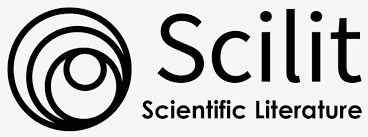Penerapan Naïve Bayes pada Potensi Akademik Siswa SD Negeri 5 Singakerta
DOI:
https://doi.org/10.14421/jiska.2023.8.2.154-163Keywords:
Student Potential, Student Academic, Data Mining, Naïve Bayes, Confusion MatrixAbstract
Student potential cannot only be measured based on the result of academic scores, and many things influence student academic determination. The purpose of this research is to prove that students' potential is influenced by many things, such as character, academic activity, socioeconomic status, and distance of residence. By using the naïve Bayes method and testing with the confusion matrix, it will give results for this research. The data is from V-grade students at SD Negeri 5 Singakerta, with 120 students assisted by the homeroom teacher. Based on the results of the tests that have been carried out using a data sample of 10 students and 1 data using the Naïve Bayes, it is obtained that students have academic potential, and the results with the confusion matrix are accuracy of 75%, precision of 81%, and recall of 89%. In this case, it can be concluded that the academic potential of students can not only be measured based on the results of the final grade, but many other factors have an effect, the application of the Naïve Bayes in students' academic potential is appropriate to use.
References
Firdaus, A. F., Saedudin, R., & Andeswari, R. (2021). Implementasi Metode Klasifikasi Naive Bayes Dalam Memprediksi Kelulusan Mahasiswa. EProceedings of Engineering, 8(5), 9274–9279. https://openlibrarypublications.telkomuniversity.ac.id/index.php/engineering/article/view/15825/15538
Firdaus, Y. M. (2019). Penerapan Metode Naïve Bayes Classifier untuk Mengklasifikasi Tingkat Prestasi Akademik Santri Pondok Pesantren Mahasiswa (PPM) Baitul Jannah Malang. JATI (Jurnal Mahasiswa Teknik Informatika), 3(1), 327–336. https://doi.org/10.36040/JATI.V3I1.1398
Ghaniy, R., & Sihotang, K. (2019). Penerapan Metode Naïve Bayes Classifier Untuk Penentuan Topik Tugas Akhir. Teknois : Jurnal Ilmiah Teknologi Informasi Dan Sains, 9(1), 63–72. https://doi.org/10.36350/jbs.v9i1.7
Kawani, G. P. (2019). Implementasi Naive Bayes. Journal of Informatics, Information System, Software Engineering and Applications (INISTA), 1(2), 73–81. https://doi.org/10.20895/inista.v1i2.73
Marpaung, S., -, S., & -, I. (2021). Penerapan Metode Naïve Bayes Dalam Memprediksi Prestasi Siswa Di SMA Negeri 1 Panombeian Panei. Jurnal Sistem Informasi Dan Ilmu Komputer Prima(JUSIKOM PRIMA), 4(2), 8–13. https://doi.org/10.34012/jurnalsisteminformasidanilmukomputer.v4i2.1522
Martantoh, E., & Yanih, N. (2022). Implementasi Metode Naïve Bayes Untuk Klasifikasi Karakteristik Kepribadiaan Siswa Di Sekolah MTS Darussa’adah Menggunakan Php Mysql. Jurnal Teknologi Sistem Informasi, 3(2), 166–175. https://doi.org/10.35957/jtsi.v3i2.2896
Nurhidayati, N. I., Yahya, Y., Fathurrahman, F., Samsu, L. M., & Amnia, W. (2023). Implementasi Algoritma Naive Bayes Untuk Klasifikasi Penerima Beasiswa (Studi Kasus Universitas Hamzanwadi). Infotek : Jurnal Informatika Dan Teknologi, 6(1), 177–188. https://doi.org/10.29408/jit.v6i1.7529
Putri, S. eka Y. (2020). Penerapan Model Naive Bayes untuk Memprediksi Potensi Pendaftaran Siswa di SMK Taman Siswa Teluk Betung Berbasis Web. Jurnal Informatika Dan Rekayasa Perangkat Lunak, 1(1), 93–99. https://doi.org/10.33365/jatika.v1i1.228
Resti, R., Abidin, D. Z., & Rasywir, E. (2021). Penerapan Data Mining Klasifikasi Untuk Memprediksi Potensi Mahasiswa Berprestasi Di Stikom Dinamika Bangsa Jambi Dengan Metode Naive Bayes. Jurnal Ilmiah Mahasiswa Teknik Informatika, 3(2), 97–114. https://ejournal.stikom-db.ac.id/index.php/jimti/article/view/1047
Saleh, A. (2015a). Klasifikasi Metode Naive Bayes dalam Data Mining untuk Menentukan Konsentrasi Siswa (Studi Kasus di MAS PAB 2 Medan). KeTIK - Konferensi Nasional Pengembangan Teknologi Informasi Dan Komunikasi, 200–208.
Saleh, A. (2015b). Penerapan Data Mining dalam Menentukan Jurusan Siswa. Seminar Nasional Informatika 2015, 1(1), 351–355. https://e-journal.potensi-utama.ac.id/ojs/index.php/SNIf/article/view/291
Sarasvananda, I. B. G., Selivan, D., Radhitya, M. L., & Putra, I. N. T. A. (2022). Analisis Sentimen Pada Pembelajaran Daring Di Indonesia Melalui Twitter Menggunakan Naïve Bayes Classifier. SINTECH (Science and Information Technology) Journal, 5(2), 227–233. https://doi.org/10.31598/sintechjournal.v5i2.1241
Susilo, G., & Nur’aini, T. A. (2018). Pengaruh Tes Potensi Akademik Siswa terhadap Prestasi Belajar Matematika. JKPM (Jurnal Kajian Pendidikan Matematika), 4(1), 21. https://doi.org/10.30998/jkpm.v4i1.2975
Triandini, M., Defit, S., & Nurcahyo, G. W. (2021). Data Mining dalam Mengukur Tingkat Keaktifan Siswa dalam Mengikuti Proses Belajar pada SMP IT Andalas Cendekia. Jurnal Informasi Dan Teknologi, 3, 167–173. https://doi.org/10.37034/jidt.v3i3.120
Yendarman, Y. (2016). Peningkatan Kemampuan Menetapkan Kkm dengan Diskusi Kelompok Kecil Bagi Guru Matematika SMKN 1, SMKN 4, Smk PGRI 2 Kota Jambi. Jurnal Ilmiah Universitas Batanghari Jambi, 16(3), 122–129. https://doi.org/10.33087/JIUBJ.V16I3.25
Downloads
Published
How to Cite
Issue
Section
License
Copyright (c) 2023 Ni Kadek Winda Patrianingsih, I Kadek Arya Sugianta

This work is licensed under a Creative Commons Attribution-NonCommercial 4.0 International License.
Authors who publish with this journal agree to the following terms as stated in http://creativecommons.org/licenses/by-nc/4.0
a. Authors retain copyright and grant the journal right of first publication with the work simultaneously licensed under a Creative Commons Attribution License that allows others to share the work with an acknowledgement of the work's authorship and initial publication in this journal.
b. Authors are able to enter into separate, additional contractual arrangements for the non-exclusive distribution of the journal's published version of the work (e.g., post it to an institutional repository or publish it in a book), with an acknowledgement of its initial publication in this journal.
c. Authors are permitted and encouraged to post their work online (e.g., in institutional repositories or on their website) prior to and during the submission process, as it can lead to productive exchanges, as well as earlier and greater citation of published work.










